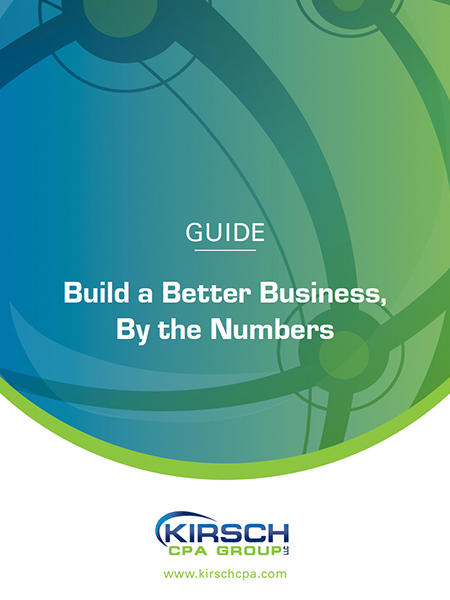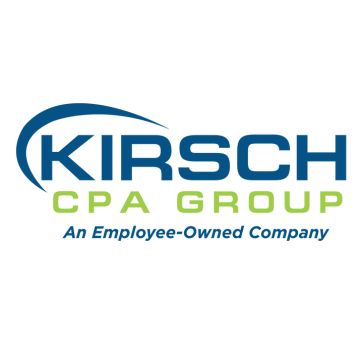Tips for Recognizing and Solving Cash Flow Problems
Sep 30, 2022

There’s more to financial reporting than profits. The statement of cash flows can be a powerful management tool. During an economic downturn, it’s especially important for managers to monitor cash flows to detect — and correct — problems as soon as possible. Here’s an overview of how this underappreciated report works and what to look for as you review it.
3 Types of Cash Flows
The statement of cash flows consists of three sections:
1. Cash flows from operations. This section converts the business’s accrual-basis net income to cash provided or used by its operations. All income-related items flow through this part of the statement, such as net income, gains or losses on asset sales, depreciation and amortization, and net changes in accounts receivable, inventory, prepaid assets, accrued expenses and payables.
2. Cash flows from investing activities. The second portion of the statement is a primary indicator of solvency. If a company buys or sells property, equipment or marketable securities, the transaction shows up here. This section might reveal that a company is reinvesting in its future operations — or divesting of assets for emergency funds.
Other sources of income are also included here. For example, if you operate an engineering firm and lease unused square footage to a third party, the rental income received is reported in this area of the cash flow statement.
3. Cash flows from financing activities. This section reveals your company’s transactions with investors and lenders. It shows the company’s ability to access cash via either debt or equity. It also indicates how the company leveraged its balance sheet to avoid cash crunches — one indication of how well it might navigate a sluggish economy.
Below these three categories is the schedule of noncash investing and financing transactions. This portion of the cash flow statement summarizes significant transactions in which cash didn’t directly change hands: for example, like-kind exchanges or assets purchased directly with loan proceeds.
Red Flags
The statement of cash flows essentially shows changes in balance sheet items from one accounting period to the next. So, it’s important to inquire about significant balance sheet changes.
For example, if accounts receivable were $13.5 million in 2020 and $14.5 million in 2021, the change would be reported as a cash outflow from operations of $1 million. That’s because more money was tied up in receivables in 2021 than in 2020. An increase in receivables is common for growing businesses, but a mounting receivables balance also might signal cash management inefficiencies. And an aging schedule might reveal significant potential bad debt write-offs.
Other potential signs of financial distress you might discover when reviewing the statement of cash flows include:
- Sales of operating assets to generate cash flow,
- Impairment write-offs,
- Maxed out credit lines,
- Excessive amounts of bank loans or loans from shareholders, and
- Large capital contributions from new or existing investors.
Above all, beware of businesses that continually report negative cash flows from operations. When operating outflows consistently outpace operating inflows, it’s time for corrective action, especially when other red flags are noted in the statement of cash flows. There’s rarely just one indicator of cash flow problems; most companies raise multiple red flags when they’re short on cash.
Control Measures
If you uncover the warning signs of an imminent cash crunch, consider these options to stave it off:
Control growth. During the pandemic, some companies were positioned (or pivoted) to take advantage of emerging opportunities. In markets that have changed permanently — for example, online meeting forums, mobile delivery apps and telemedicine — continued growth may be expected. Rapid growth can be both a blessing (you’re selling more) and a curse (you might experience growing pains).
Cash shortages often result from the operating cycle: Before your business receives payment from customers, you must fork out substantial sums to pay employees, rent facilities, build product, etc. Out-of-control growth also can impair quality, which, in turn, hurts goodwill and long-term viability. (See “Know Your Business Cycles” at right.)
Review expenses. This requires more finesse than just cutting items. Sometimes, you can lower your monthly cash outflows by converting costs from fixed to variable. Examples of fixed expenses include mortgage payments, compensation and insurance. When an employee quits, you might consider using a contractor to fill the position. Or if your copier breaks, you might consider leasing one, rather than purchasing a new one. Also, it’s important to review your company’s tax planning strategies based on current economic conditions and tax laws.
Upgrade asset management. How much money are you making for each dollar that’s invested in working capital, equipment and other assets? By monitoring turnover ratios, you can identify weaknesses in asset management and brainstorm how to bolster them. For example, an increase in the days in outstanding accounts receivable might improve with tighter credit policies, early-bird discounts, collections-based compensation programs and dedicated collections personnel.
Conversely, some companies carry too much inventory. In addition to tying up working capital, inventory incurs hidden costs, such as interest, storage and insurance expenses.
Knowledge Is Power
Effective cash management requires conscious planning. The statement of cash flows can be used as an assessment tool to gain insight into your business’s financial health. But business owners and managers need to understand what they’re seeing — or they could draw the wrong conclusions.
Know Your Business Cycles
There are two keys to unlocking cash flow trapped in your working capital accounts:
1. The sales cycle. This is how long it takes your business to 1) develop, purchase or otherwise acquire a product or service, 2) market that product or service, and 3) eventually close a sale and collect the accounts receivable. Collections — from clear, accurate invoicing to allowing online payment methods for faster access to money — is a major aspect of cash flow management.
Some companies underestimate the impact of the selling cycle. For example, entrepreneurs may believe they can get their wares to market, close deals and collect on them more quickly than is realistic.
Mature companies can also lose sight of their sales cycles’ expansion, especially when times are good. Over time, regular customers may start taking longer to pay. Or a major buyer might jump ship and be harder to replace than expected. Working capital inefficiencies such as these are often exposed when economic conditions deteriorate.
2. The disbursements cycle. This is the process of managing the regular, outgoing payments to employees, vendors, creditors (including short- and long-term financing) and other parties. As payments go out, your cash flow is affected.
The selling and disbursements cycles aren’t separate functions; they overlap. If they don’t do so evenly, your delayed cash inflows can create a crisis. That’s why it’s critical for business owners to understand the interaction between the money being spent to generate revenue and the revenue actually being generated.
That is, just as you work to match revenue to related expenses, you also should ensure that your selling cycle (cash inflows, including outside financing) at least matches your disbursements cycle (cash outflows). Ideally, you’re converting sales to cash more quickly than you’re paying expenditures, thereby strengthening cash flows.
Owners and managers should monitor cash flows using monthly cash flow statements and/or weekly dashboard reports provided by the accounting department. Today’s accounting systems can also generate real-time information, so you’re less likely to be caught off guard — if you’re diligent in reviewing these reports and know what to look for in the data.
We can help you tackle business challenges like these – schedule an appointment today.
© Copyright 2022. All rights reserved.
Sign Up for Email Updates
Accounting & Financial News

7 Breaks for Families under the New Tax Law
The One, Big, Beautiful Bill Act (OBBBA), which was enacted on July 4, generally extends and expands…

Safe Harbor 401(k)s Offer Businesses a Simpler Route
When many small to midsize businesses are ready to sponsor a qualified retirement plan, they encounter a…




